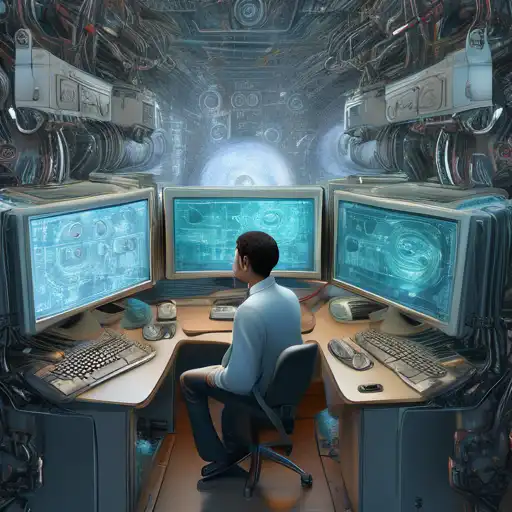Introduction to Computer Vision
Computer vision is a field of artificial intelligence that trains computers to interpret and understand the visual world. By leveraging digital images from cameras and videos and deep learning models, machines can accurately identify and classify objects—and then react to what they 'see'.
How Computer Vision Works
At its core, computer vision involves acquiring, processing, analyzing, and understanding digital images to extract high-dimensional data from the real world. This process enables the automation of tasks that the human visual system can do. It's a multidisciplinary field that could be said to include aspects of computer science, electrical engineering, mathematics, and more.
Key Technologies Behind Computer Vision
- Image Processing: The first step in computer vision, where images are enhanced or otherwise manipulated to improve the quality of the input data.
- Pattern Recognition: This involves the identification of patterns and regularities in data, which is crucial for object detection and classification.
- Machine Learning: Algorithms learn from and make predictions on data, enabling computers to recognize complex patterns in images.
- Deep Learning: A subset of machine learning, deep learning uses neural networks with many layers to analyze various factors of an image.
Applications of Computer Vision
Computer vision technology is being applied in numerous fields, revolutionizing how tasks are performed. From healthcare, where it aids in diagnosing diseases from imaging scans, to automotive, powering the development of self-driving cars, the applications are vast and varied.
Future Prospects
The future of computer vision is incredibly promising, with advancements in AI and machine learning driving the development of more sophisticated and accurate vision systems. As technology evolves, we can expect computer vision to become even more integrated into our daily lives, enhancing everything from security systems to augmented reality experiences.
Challenges in Computer Vision
Despite its rapid advancement, computer vision faces several challenges, including the need for large datasets for training, the complexity of interpreting three-dimensional objects from two-dimensional images, and ensuring privacy and security in applications like facial recognition.
For more insights into how artificial intelligence is transforming industries, check out our article on AI Transforming Industries.
Conclusion
Computer vision is a transformative technology that is teaching machines to see and understand the world around them. With its wide range of applications and ongoing advancements, it holds the potential to revolutionize numerous aspects of society and industry. As we continue to overcome its challenges, the possibilities are limitless.
